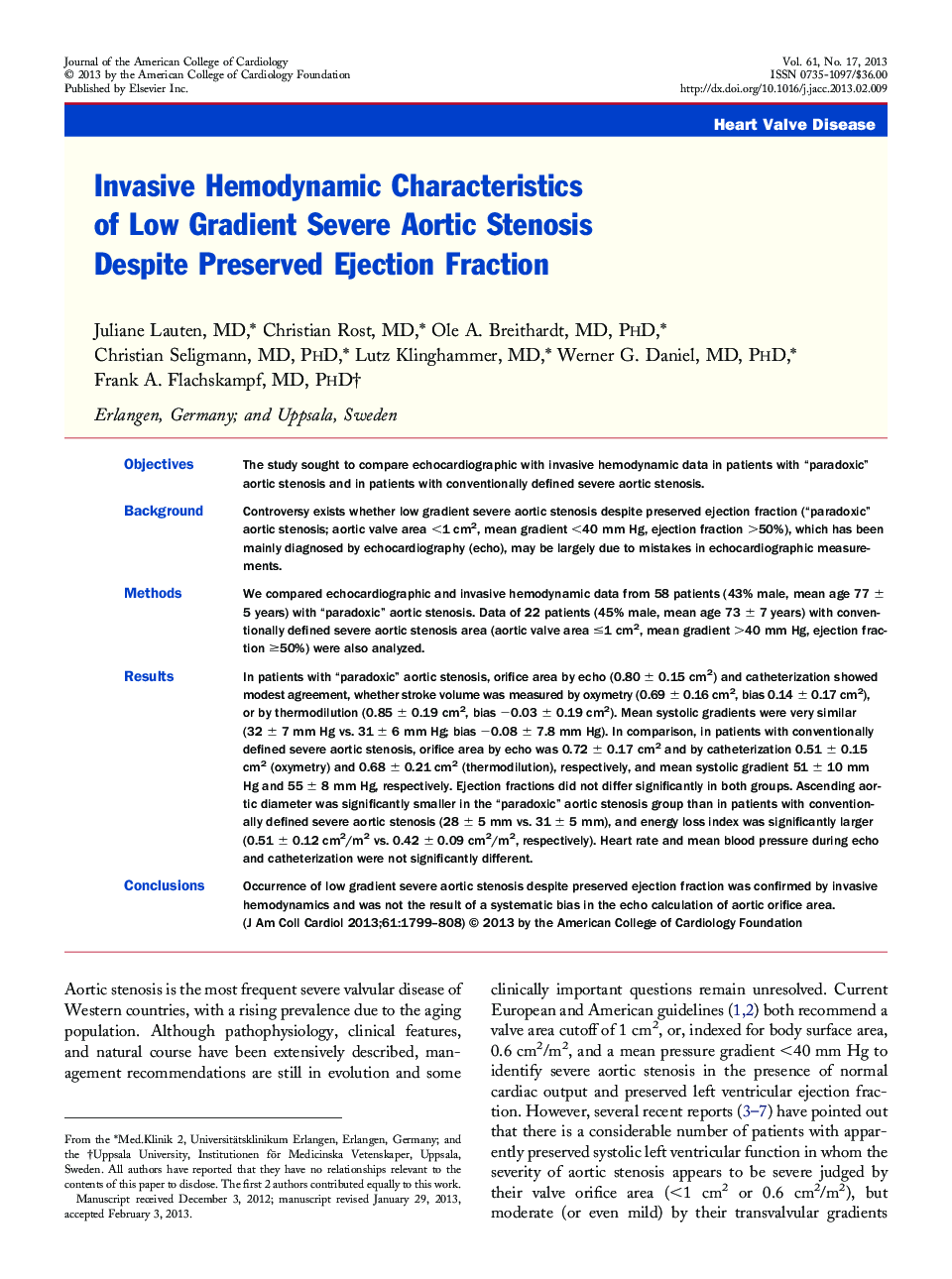| Article ID | Journal | Published Year | Pages | File Type |
|---|---|---|---|---|
| 5983194 | Journal of the American College of Cardiology | 2013 | 10 Pages |
ObjectivesThe study sought to compare echocardiographic with invasive hemodynamic data in patients with “paradoxic” aortic stenosis and in patients with conventionally defined severe aortic stenosis.BackgroundControversy exists whether low gradient severe aortic stenosis despite preserved ejection fraction (“paradoxic” aortic stenosis; aortic valve area <1 cm2, mean gradient <40 mm Hg, ejection fraction >50%), which has been mainly diagnosed by echocardiography (echo), may be largely due to mistakes in echocardiographic measurements.MethodsWe compared echocardiographic and invasive hemodynamic data from 58 patients (43% male, mean age 77 ± 5 years) with “paradoxic” aortic stenosis. Data of 22 patients (45% male, mean age 73 ± 7 years) with conventionally defined severe aortic stenosis area (aortic valve area â¤1 cm2, mean gradient >40 mm Hg, ejection fraction â¥50%) were also analyzed.ResultsIn patients with “paradoxic” aortic stenosis, orifice area by echo (0.80 ± 0.15 cm2) and catheterization showed modest agreement, whether stroke volume was measured by oxymetry (0.69 ± 0.16 cm2, bias 0.14 ± 0.17 cm2), or by thermodilution (0.85 ± 0.19 cm2, bias â0.03 ± 0.19 cm2). Mean systolic gradients were very similar (32 ± 7 mm Hg vs. 31 ± 6 mm Hg; bias â0.08 ± 7.8 mm Hg). In comparison, in patients with conventionally defined severe aortic stenosis, orifice area by echo was 0.72 ± 0.17 cm2 and by catheterization 0.51 ± 0.15 cm2 (oxymetry) and 0.68 ± 0.21 cm2 (thermodilution), respectively, and mean systolic gradient 51 ± 10 mm Hg and 55 ± 8 mm Hg, respectively. Ejection fractions did not differ significantly in both groups. Ascending aortic diameter was significantly smaller in the “paradoxic” aortic stenosis group than in patients with conventionally defined severe aortic stenosis (28 ± 5 mm vs. 31 ± 5 mm), and energy loss index was significantly larger (0.51 ± 0.12 cm2/m2 vs. 0.42 ± 0.09 cm2/m2, respectively). Heart rate and mean blood pressure during echo and catheterization were not significantly different.ConclusionsOccurrence of low gradient severe aortic stenosis despite preserved ejection fraction was confirmed by invasive hemodynamics and was not the result of a systematic bias in the echo calculation of aortic orifice area.
